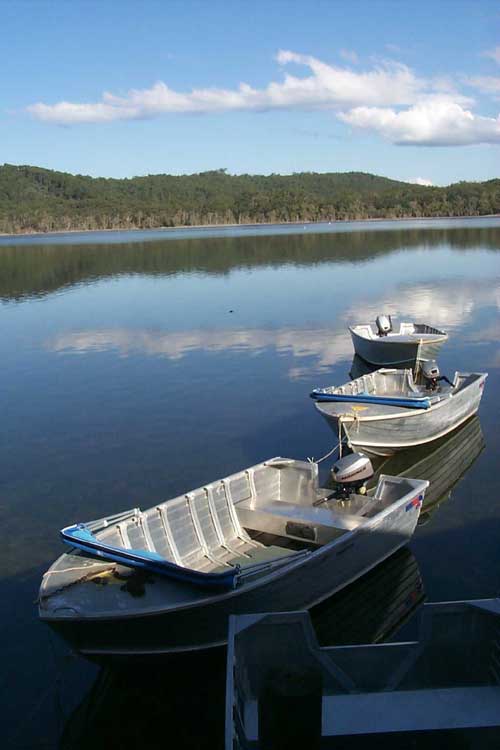Shipping, boating, yachting and ancillary services contribute to the degradation of marine and coastal environments1. The number of licensed mooring sites in a coastal waterway is a potential indicator of yachting pressure. The frequency of ship visits to Australian ports and the frequency of shipping accidents are suggested indicators for State of the Environment reporting for Coasts and Oceans (formerly Estuaries and the Sea), to assess the risk that shipping operations impose on marine and coastal environments2.
- ‘Ship visits’ (Indicator 7.14) documents the nature of the vessels and the type of cargo handled (in broad classes), in addition to the number of ships entering a declared port2.
- ‘Shipping accidents’ (Indicator 7.15) documents the frequency of shipping accidents in Australian waters, as well as the main cargo carried, materials lost to the marine environment and estimates of imposed damage2.

Photo 1. Hire boats on Smith’s Lake, NSW (photo by Dave Ryan).
Coastal issues arising from ship visits
Risks to marine and coastal environments imposed by shipping and boating (including accidents) are:
- the importation and translocation of marine pests via hull fouling and ballast water;
- heavy metals and other toxicants (e.g. tributyltin) from anti-fouling paints and fuels;
- discharge of garbage, sewage (e.g. a source of nutrients and pathogenic organisms) and other wastes;
- physical disturbance to habitats and organisms by moors, anchors, boat propellers and dredging to maintain suitable water depths;
- marine trash;
- oil spills (in the case of ships); and
- ocean noise3.
These factors can act alone or in concert to degrade critical habitats (e.g. mangroves, seagrass meadows and intertidal flats), and to reduce biodiversity.
Existing information and data
More information on the use of shipping visits and shipping accidents as indicators (e.g. reporting scales, outputs, analysis and interpretation and data sources) can be found in the Estuaries and the Sea volume of Environmental Indicators for National State of the Environment Reporting2. A comprehensive literature review on Australian ports documents the availability of dredging activity, habitats, water quality and introduced pest data for 66 Australian ports4.
- ANZECC (1997) Best Practice Guidelines for Waste Reception Facilities at Ports, Marinas and boat Harbours in Australia and New Zealand (www.ea.gov.au/coasts/pollution/dumping/waste-reception/pubs/guidmn2.pdf). ↩
- Ward, T., Butler, E. and Hill, B. 1998. Environmental Indicators for National State of the Environment Reporting, Estuaries and the Sea, Commonwealth of Australia, pp. 81 (www.ea.gov.au/soe/coasts/estuaries-ind.html). ↩ ↩ ↩ ↩
- Cato, D.H. 2007. The contribution of shipping to ocean noise and the potential impact on marine animals. Australian Marine Sciences Association Marine Science in a Changing World conference, Melbourne, Australia, 9-13 July. ↩
- Australian State of the Environment Committee. 2001. Coasts and Oceans: State of the environment Report 2001. CSIRO Publishing. Collingwood (www.ea.gov.au/soe/2001/coasts/pubs/coasts.pdf). ↩


